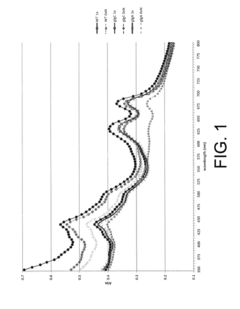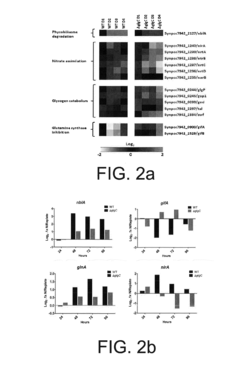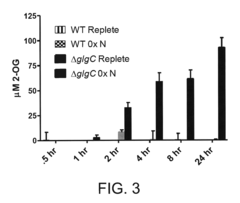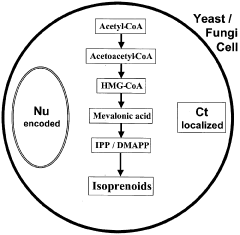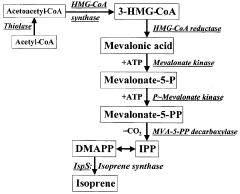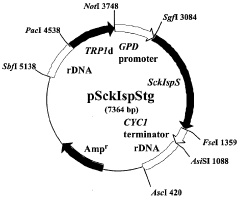Isopentane’s Function in Photochemical Smog Formation Control
JUL 25, 20259 MIN READ
Generate Your Research Report Instantly with AI Agent
Patsnap Eureka helps you evaluate technical feasibility & market potential.
Isopentane Smog Control Background
Isopentane, a volatile organic compound (VOC), plays a significant role in the formation of photochemical smog, a complex air pollution phenomenon that plagues many urban areas worldwide. The study of isopentane's function in photochemical smog formation control has gained increasing attention due to its prevalence in various industrial processes and its potential impact on air quality.
Photochemical smog, first identified in Los Angeles in the 1940s, is a result of complex chemical reactions between nitrogen oxides (NOx) and VOCs in the presence of sunlight. Isopentane, being a highly reactive VOC, contributes to the formation of ground-level ozone, a key component of photochemical smog. Its low boiling point and high vapor pressure make it particularly prone to evaporation, leading to its release into the atmosphere from various sources.
The historical context of isopentane in smog formation can be traced back to the rapid industrialization and urbanization of the mid-20th century. As petroleum refining and petrochemical industries expanded, the emissions of isopentane and other VOCs increased significantly. This coincided with a rise in automobile usage, further exacerbating the problem of photochemical smog in urban areas.
Over the years, researchers and environmental agencies have recognized the need to understand and control isopentane emissions as part of broader air quality management strategies. The Clean Air Act in the United States, first enacted in 1963 and subsequently amended, has been instrumental in driving research and regulatory efforts to address VOC emissions, including isopentane.
The technological evolution in smog control has seen various approaches to mitigate isopentane's impact. These include improvements in industrial processes to reduce emissions, the development of more efficient catalytic converters for vehicles, and the implementation of vapor recovery systems at gasoline stations. Additionally, advancements in atmospheric chemistry modeling have enhanced our understanding of isopentane's role in smog formation, allowing for more targeted control strategies.
As global awareness of air quality issues has grown, international efforts to control photochemical smog have intensified. The study of isopentane's function in this context has become increasingly important, particularly in rapidly developing countries facing severe air pollution challenges. This has led to a global exchange of knowledge and technologies aimed at mitigating the effects of isopentane and other VOCs on air quality.
Photochemical smog, first identified in Los Angeles in the 1940s, is a result of complex chemical reactions between nitrogen oxides (NOx) and VOCs in the presence of sunlight. Isopentane, being a highly reactive VOC, contributes to the formation of ground-level ozone, a key component of photochemical smog. Its low boiling point and high vapor pressure make it particularly prone to evaporation, leading to its release into the atmosphere from various sources.
The historical context of isopentane in smog formation can be traced back to the rapid industrialization and urbanization of the mid-20th century. As petroleum refining and petrochemical industries expanded, the emissions of isopentane and other VOCs increased significantly. This coincided with a rise in automobile usage, further exacerbating the problem of photochemical smog in urban areas.
Over the years, researchers and environmental agencies have recognized the need to understand and control isopentane emissions as part of broader air quality management strategies. The Clean Air Act in the United States, first enacted in 1963 and subsequently amended, has been instrumental in driving research and regulatory efforts to address VOC emissions, including isopentane.
The technological evolution in smog control has seen various approaches to mitigate isopentane's impact. These include improvements in industrial processes to reduce emissions, the development of more efficient catalytic converters for vehicles, and the implementation of vapor recovery systems at gasoline stations. Additionally, advancements in atmospheric chemistry modeling have enhanced our understanding of isopentane's role in smog formation, allowing for more targeted control strategies.
As global awareness of air quality issues has grown, international efforts to control photochemical smog have intensified. The study of isopentane's function in this context has become increasingly important, particularly in rapidly developing countries facing severe air pollution challenges. This has led to a global exchange of knowledge and technologies aimed at mitigating the effects of isopentane and other VOCs on air quality.
Market Demand Analysis
The market demand for solutions to control photochemical smog formation, particularly those involving isopentane, has been steadily increasing in recent years. This growth is primarily driven by the escalating concerns over air quality in urban areas and the stringent environmental regulations being implemented worldwide. As cities continue to expand and industrialize, the need for effective smog control measures becomes more pressing.
In the automotive sector, there is a significant demand for technologies that can reduce volatile organic compound (VOC) emissions, including isopentane. With the global automotive market projected to reach 9 billion units by 2030, the potential for isopentane-related smog control solutions is substantial. Major automotive manufacturers are actively seeking innovative approaches to meet increasingly strict emission standards, creating a robust market for advanced pollution control technologies.
The petrochemical industry also represents a key market for isopentane-related smog control solutions. As refineries and chemical plants face tighter regulations on emissions, there is a growing need for technologies that can effectively manage isopentane and other VOC releases. This sector's demand is further amplified by the expansion of petrochemical production in developing economies, where air quality concerns are becoming more prominent.
Urban air quality management systems present another significant market opportunity. Cities worldwide are investing in comprehensive air monitoring and control systems, with a focus on reducing photochemical smog. The global smart city market, which includes air quality management components, is expected to grow substantially in the coming years, providing a fertile ground for isopentane-related smog control technologies.
The construction and building materials industry is also showing increased interest in low-emission products and technologies. As awareness of indoor air quality grows, there is a rising demand for construction materials and coatings that minimize isopentane and other VOC emissions. This trend is particularly strong in green building initiatives, which are gaining traction globally.
In the consumer products sector, there is a noticeable shift towards eco-friendly alternatives that reduce the use of isopentane and similar compounds in aerosols and other household items. This consumer-driven demand is pushing manufacturers to invest in research and development of smog-reducing formulations and technologies.
Overall, the market for isopentane-related smog control solutions is diverse and expanding. The convergence of environmental concerns, regulatory pressures, and technological advancements is creating a favorable landscape for innovation in this field. As cities and industries worldwide grapple with air quality issues, the demand for effective, sustainable, and economically viable solutions for photochemical smog control is expected to continue its upward trajectory.
In the automotive sector, there is a significant demand for technologies that can reduce volatile organic compound (VOC) emissions, including isopentane. With the global automotive market projected to reach 9 billion units by 2030, the potential for isopentane-related smog control solutions is substantial. Major automotive manufacturers are actively seeking innovative approaches to meet increasingly strict emission standards, creating a robust market for advanced pollution control technologies.
The petrochemical industry also represents a key market for isopentane-related smog control solutions. As refineries and chemical plants face tighter regulations on emissions, there is a growing need for technologies that can effectively manage isopentane and other VOC releases. This sector's demand is further amplified by the expansion of petrochemical production in developing economies, where air quality concerns are becoming more prominent.
Urban air quality management systems present another significant market opportunity. Cities worldwide are investing in comprehensive air monitoring and control systems, with a focus on reducing photochemical smog. The global smart city market, which includes air quality management components, is expected to grow substantially in the coming years, providing a fertile ground for isopentane-related smog control technologies.
The construction and building materials industry is also showing increased interest in low-emission products and technologies. As awareness of indoor air quality grows, there is a rising demand for construction materials and coatings that minimize isopentane and other VOC emissions. This trend is particularly strong in green building initiatives, which are gaining traction globally.
In the consumer products sector, there is a noticeable shift towards eco-friendly alternatives that reduce the use of isopentane and similar compounds in aerosols and other household items. This consumer-driven demand is pushing manufacturers to invest in research and development of smog-reducing formulations and technologies.
Overall, the market for isopentane-related smog control solutions is diverse and expanding. The convergence of environmental concerns, regulatory pressures, and technological advancements is creating a favorable landscape for innovation in this field. As cities and industries worldwide grapple with air quality issues, the demand for effective, sustainable, and economically viable solutions for photochemical smog control is expected to continue its upward trajectory.
Current Challenges
The control of isopentane's role in photochemical smog formation faces several significant challenges. One of the primary obstacles is the complex nature of atmospheric chemistry involved in smog formation. Isopentane, being a highly reactive volatile organic compound (VOC), participates in a series of intricate chemical reactions that are influenced by various environmental factors such as temperature, sunlight intensity, and the presence of other pollutants. This complexity makes it difficult to isolate and quantify isopentane's specific contribution to smog formation, hindering the development of targeted control strategies.
Another major challenge lies in the diverse sources of isopentane emissions. While a significant portion comes from vehicular exhaust and fuel evaporation, industrial processes and consumer products also contribute substantially. This diversity of sources complicates efforts to implement comprehensive control measures, as it requires coordinated action across multiple sectors and regulatory frameworks. Additionally, the global nature of atmospheric pollution means that local control efforts can be undermined by long-range transport of pollutants, necessitating international cooperation for effective management.
The current regulatory landscape presents its own set of challenges. Many existing air quality standards and emission regulations were developed without specific consideration for isopentane's role in smog formation. Updating these regulations to address isopentane specifically requires extensive scientific evidence, which is often time-consuming and resource-intensive to gather. Furthermore, there is often resistance from industry stakeholders to new regulations that might increase operational costs or require significant technological upgrades.
Technological limitations also pose significant hurdles. While advancements have been made in emission control technologies, many current solutions are not optimized for isopentane reduction. Developing and implementing new technologies that can effectively capture or neutralize isopentane emissions, particularly from diverse and diffuse sources, remains a technical challenge. This is compounded by the need for these technologies to be cost-effective and scalable to ensure widespread adoption.
Monitoring and measurement challenges further complicate control efforts. Accurate, real-time detection of isopentane in ambient air and emissions sources is crucial for understanding its dynamics in smog formation and assessing the effectiveness of control measures. However, current monitoring technologies often lack the sensitivity or specificity required for precise isopentane quantification, especially at the low concentrations relevant to air quality standards.
Lastly, public awareness and engagement present ongoing challenges. The role of specific compounds like isopentane in air pollution is not widely understood by the general public. This lack of awareness can lead to reduced support for control measures and policies aimed at mitigating isopentane emissions. Educating the public and fostering community engagement in air quality initiatives are essential but often overlooked aspects of effective smog control strategies.
Another major challenge lies in the diverse sources of isopentane emissions. While a significant portion comes from vehicular exhaust and fuel evaporation, industrial processes and consumer products also contribute substantially. This diversity of sources complicates efforts to implement comprehensive control measures, as it requires coordinated action across multiple sectors and regulatory frameworks. Additionally, the global nature of atmospheric pollution means that local control efforts can be undermined by long-range transport of pollutants, necessitating international cooperation for effective management.
The current regulatory landscape presents its own set of challenges. Many existing air quality standards and emission regulations were developed without specific consideration for isopentane's role in smog formation. Updating these regulations to address isopentane specifically requires extensive scientific evidence, which is often time-consuming and resource-intensive to gather. Furthermore, there is often resistance from industry stakeholders to new regulations that might increase operational costs or require significant technological upgrades.
Technological limitations also pose significant hurdles. While advancements have been made in emission control technologies, many current solutions are not optimized for isopentane reduction. Developing and implementing new technologies that can effectively capture or neutralize isopentane emissions, particularly from diverse and diffuse sources, remains a technical challenge. This is compounded by the need for these technologies to be cost-effective and scalable to ensure widespread adoption.
Monitoring and measurement challenges further complicate control efforts. Accurate, real-time detection of isopentane in ambient air and emissions sources is crucial for understanding its dynamics in smog formation and assessing the effectiveness of control measures. However, current monitoring technologies often lack the sensitivity or specificity required for precise isopentane quantification, especially at the low concentrations relevant to air quality standards.
Lastly, public awareness and engagement present ongoing challenges. The role of specific compounds like isopentane in air pollution is not widely understood by the general public. This lack of awareness can lead to reduced support for control measures and policies aimed at mitigating isopentane emissions. Educating the public and fostering community engagement in air quality initiatives are essential but often overlooked aspects of effective smog control strategies.
Existing Control Methods
01 Photochemical smog formation mechanisms
Isopentane contributes to photochemical smog formation through its volatile organic compound (VOC) properties. When exposed to sunlight and nitrogen oxides, it undergoes photochemical reactions, producing ozone and other secondary pollutants. This process is a key factor in urban air pollution and can lead to respiratory issues and environmental damage.- Photochemical smog formation mechanisms: Isopentane contributes to photochemical smog formation through its volatile organic compound (VOC) properties. When exposed to sunlight and nitrogen oxides, it undergoes photochemical reactions, producing ground-level ozone and other secondary pollutants. Understanding these mechanisms is crucial for developing strategies to mitigate smog formation in urban areas.
- Emission control technologies: Various technologies have been developed to reduce isopentane emissions and minimize its contribution to photochemical smog. These include advanced catalytic converters, vapor recovery systems, and improved fuel formulations. Implementing these technologies in industrial processes and vehicles can significantly decrease the release of isopentane into the atmosphere.
- Monitoring and detection methods: Accurate monitoring and detection of isopentane levels in the atmosphere are essential for assessing air quality and predicting smog formation potential. Advanced sensors, spectroscopic techniques, and gas chromatography methods have been developed to measure isopentane concentrations in real-time, enabling better environmental management and policy-making.
- Alternative fuel formulations: Research into alternative fuel formulations aims to reduce the use of isopentane and other smog-forming compounds. This includes developing cleaner-burning fuels, exploring renewable energy sources, and modifying existing fuel compositions to minimize their photochemical reactivity. These efforts contribute to reducing overall smog formation potential in urban environments.
- Urban planning and air quality management: Effective urban planning and air quality management strategies are crucial in mitigating the impact of isopentane-induced photochemical smog. This includes implementing green spaces, improving public transportation systems, and establishing emission control zones. Such measures help reduce overall VOC emissions and improve air quality in urban areas prone to smog formation.
02 Emission control technologies
Various technologies have been developed to reduce isopentane emissions and mitigate its contribution to photochemical smog. These include advanced catalytic converters, vapor recovery systems, and improved sealing mechanisms in fuel systems. Such technologies aim to capture or convert isopentane before it can react in the atmosphere.Expand Specific Solutions03 Alternative fuel formulations
Research into alternative fuel formulations seeks to reduce the isopentane content in gasoline and other petroleum products. By developing fuel blends with lower volatility or using renewable additives, the potential for photochemical smog formation can be decreased while maintaining fuel performance.Expand Specific Solutions04 Monitoring and detection systems
Advanced monitoring and detection systems have been developed to measure isopentane levels in the atmosphere and industrial emissions. These systems utilize various spectroscopic and chromatographic techniques to provide real-time data on isopentane concentrations, enabling better management of air quality and emission control strategies.Expand Specific Solutions05 Industrial process improvements
Innovations in industrial processes aim to reduce isopentane emissions from manufacturing and refining operations. These improvements include closed-loop systems, enhanced distillation techniques, and the use of alternative solvents or propellants in products that traditionally use isopentane.Expand Specific Solutions
Key Industry Players
The competitive landscape for isopentane's function in photochemical smog formation control is in an early development stage, with significant potential for growth as environmental regulations tighten globally. The market size is expanding, driven by increasing awareness of air pollution issues. Technologically, the field is still evolving, with various approaches being explored. Key players like The Regents of the University of California, Wanhua Chemical Group, and China Petroleum & Chemical Corp. are investing in research and development to improve isopentane-based solutions. Companies such as Phillips 66 and BASF Corp. are leveraging their expertise in petrochemicals to advance this technology, while academic institutions like Arizona State University contribute valuable research insights.
The Regents of the University of California
Technical Solution: The University of California has developed advanced atmospheric chemistry models to study isopentane's role in photochemical smog formation. Their research focuses on the complex interactions between volatile organic compounds (VOCs) like isopentane and nitrogen oxides (NOx) in urban environments. They have implemented high-resolution air quality simulations that incorporate detailed chemical mechanisms, meteorological data, and emissions inventories to predict ozone formation potential and assess control strategies[1]. The university's approach includes laboratory experiments to measure isopentane's reactivity with hydroxyl radicals and its subsequent oxidation products, providing crucial kinetic data for model parameterization[2].
Strengths: Comprehensive atmospheric modeling capabilities, access to state-of-the-art laboratory facilities for experimental validation. Weaknesses: May lack direct industrial application experience for large-scale implementation of control technologies.
China Petroleum & Chemical Corp.
Technical Solution: China Petroleum & Chemical Corp. (Sinopec) has developed a multi-faceted approach to control isopentane emissions and mitigate its contribution to photochemical smog. Their strategy includes advanced refinery process optimization to reduce isopentane production during gasoline blending, implementation of vapor recovery systems at storage tanks and loading facilities, and the use of low-leak valves and fittings in their petrochemical plants[3]. Sinopec has also invested in real-time monitoring systems that use infrared cameras and other sensing technologies to detect and quantify isopentane leaks, allowing for rapid response and repair[4]. Additionally, they are exploring catalytic oxidation techniques to convert isopentane into less reactive compounds before release into the atmosphere.
Strengths: Integrated approach covering production, storage, and distribution; extensive industrial infrastructure for implementation. Weaknesses: May face challenges in retrofitting older facilities with new control technologies.
Key Innovations
Modified photosynthetic microorganisms for continuous production of carbon-containing compounds
PatentInactiveUS20150329868A1
Innovation
- Modified photosynthetic organisms, such as Cyanobacteria, are engineered to reduce glycogen accumulation and maintain photosynthetic activity under stress conditions, allowing for continuous production of carbon-containing compounds like lipids and biofuels with minimal biomass growth.
Short chain volatile isoprene hydrocarbon production using the mevalonic acid pathway in genetically engineered yeast and fungi
PatentWO2009100231A2
Innovation
- Genetic modification of yeast and fungi to express isoprene synthase genes, enabling them to produce isoprene through the mevalonic acid pathway, allowing for mass production and harvesting of isoprene hydrocarbons in bioreactors.
Environmental Regulations
Environmental regulations play a crucial role in controlling the formation of photochemical smog and managing the use of isopentane, a volatile organic compound (VOC) that contributes to this air pollution phenomenon. These regulations are designed to limit emissions of VOCs and other precursor pollutants that lead to smog formation.
In the United States, the Clean Air Act (CAA) serves as the primary federal law governing air quality and pollution control. The Environmental Protection Agency (EPA) is responsible for implementing and enforcing the CAA, which includes setting National Ambient Air Quality Standards (NAAQS) for ozone, a key component of photochemical smog. States are required to develop State Implementation Plans (SIPs) to meet these standards, often incorporating measures to reduce VOC emissions, including those from isopentane.
The EPA has established specific regulations targeting VOC emissions from various sources, such as industrial facilities, consumer products, and motor vehicles. These regulations often include limits on the VOC content of products, requirements for emission control technologies, and monitoring and reporting obligations. For isopentane specifically, its use in certain applications may be restricted or subject to emission control requirements.
In the European Union, the Air Quality Directive (2008/50/EC) sets standards for air pollutants, including ozone. The Industrial Emissions Directive (2010/75/EU) regulates emissions from industrial activities, which may include processes involving isopentane. Additionally, the VOC Solvents Emissions Directive (1999/13/EC) aims to reduce emissions of VOCs from certain industrial activities and products.
Many countries have implemented their own regulations to address photochemical smog and VOC emissions. For example, Japan has the Air Pollution Control Law, which sets emission standards for various pollutants and requires businesses to implement control measures. China has introduced the Air Pollution Prevention and Control Law, which includes provisions for VOC emission control in industrial processes and products.
Regulatory approaches to control isopentane emissions may include setting emission limits, requiring the use of best available technologies, implementing leak detection and repair programs, and mandating the use of vapor recovery systems. Some regulations also focus on product reformulation to reduce VOC content or encourage the use of alternative substances with lower smog-forming potential.
As scientific understanding of photochemical smog formation evolves and new control technologies emerge, environmental regulations are periodically updated to reflect these advancements. This ongoing process aims to improve air quality and reduce the health and environmental impacts of photochemical smog while balancing economic considerations and technological feasibility.
In the United States, the Clean Air Act (CAA) serves as the primary federal law governing air quality and pollution control. The Environmental Protection Agency (EPA) is responsible for implementing and enforcing the CAA, which includes setting National Ambient Air Quality Standards (NAAQS) for ozone, a key component of photochemical smog. States are required to develop State Implementation Plans (SIPs) to meet these standards, often incorporating measures to reduce VOC emissions, including those from isopentane.
The EPA has established specific regulations targeting VOC emissions from various sources, such as industrial facilities, consumer products, and motor vehicles. These regulations often include limits on the VOC content of products, requirements for emission control technologies, and monitoring and reporting obligations. For isopentane specifically, its use in certain applications may be restricted or subject to emission control requirements.
In the European Union, the Air Quality Directive (2008/50/EC) sets standards for air pollutants, including ozone. The Industrial Emissions Directive (2010/75/EU) regulates emissions from industrial activities, which may include processes involving isopentane. Additionally, the VOC Solvents Emissions Directive (1999/13/EC) aims to reduce emissions of VOCs from certain industrial activities and products.
Many countries have implemented their own regulations to address photochemical smog and VOC emissions. For example, Japan has the Air Pollution Control Law, which sets emission standards for various pollutants and requires businesses to implement control measures. China has introduced the Air Pollution Prevention and Control Law, which includes provisions for VOC emission control in industrial processes and products.
Regulatory approaches to control isopentane emissions may include setting emission limits, requiring the use of best available technologies, implementing leak detection and repair programs, and mandating the use of vapor recovery systems. Some regulations also focus on product reformulation to reduce VOC content or encourage the use of alternative substances with lower smog-forming potential.
As scientific understanding of photochemical smog formation evolves and new control technologies emerge, environmental regulations are periodically updated to reflect these advancements. This ongoing process aims to improve air quality and reduce the health and environmental impacts of photochemical smog while balancing economic considerations and technological feasibility.
Health Impact Assessment
The health impact assessment of isopentane's function in photochemical smog formation control is crucial for understanding the broader implications of this approach on public health. Photochemical smog, a complex mixture of air pollutants, has been linked to various adverse health effects, and the role of isopentane in its formation and control directly influences these outcomes.
Isopentane, as a volatile organic compound (VOC), contributes to the formation of ground-level ozone, a key component of photochemical smog. By controlling isopentane emissions, there is potential to reduce ozone levels and mitigate associated health risks. Studies have shown that exposure to elevated ozone concentrations can lead to respiratory issues, including decreased lung function, inflammation of airways, and exacerbation of asthma symptoms.
The health benefits of reducing isopentane in smog formation are particularly significant for vulnerable populations, such as children, the elderly, and individuals with pre-existing respiratory conditions. These groups are more susceptible to the harmful effects of air pollution and stand to gain the most from improved air quality resulting from isopentane control measures.
Cardiovascular health is another area impacted by photochemical smog reduction. Research has indicated that long-term exposure to air pollution, including ozone and particulate matter formed in smog, is associated with an increased risk of heart disease and stroke. By limiting isopentane's role in smog formation, there is potential to decrease these cardiovascular risks across affected populations.
Furthermore, the reduction of photochemical smog through isopentane control may lead to decreased incidence of certain cancers. Some components of smog, particularly polycyclic aromatic hydrocarbons (PAHs) and other reactive organic compounds, have been identified as potential carcinogens. By minimizing the formation of these compounds, the overall cancer risk associated with air pollution exposure may be reduced.
It is important to note that the health impact assessment must consider both short-term and long-term effects of isopentane control. While immediate improvements in air quality can lead to rapid reductions in acute respiratory symptoms, the full extent of health benefits may only become apparent over time as chronic exposure to pollutants is diminished.
The assessment should also take into account potential unintended consequences of isopentane control measures. For instance, if alternative compounds are used to replace isopentane in industrial processes, their health impacts must be thoroughly evaluated to ensure that the overall public health benefit is maintained or improved.
Isopentane, as a volatile organic compound (VOC), contributes to the formation of ground-level ozone, a key component of photochemical smog. By controlling isopentane emissions, there is potential to reduce ozone levels and mitigate associated health risks. Studies have shown that exposure to elevated ozone concentrations can lead to respiratory issues, including decreased lung function, inflammation of airways, and exacerbation of asthma symptoms.
The health benefits of reducing isopentane in smog formation are particularly significant for vulnerable populations, such as children, the elderly, and individuals with pre-existing respiratory conditions. These groups are more susceptible to the harmful effects of air pollution and stand to gain the most from improved air quality resulting from isopentane control measures.
Cardiovascular health is another area impacted by photochemical smog reduction. Research has indicated that long-term exposure to air pollution, including ozone and particulate matter formed in smog, is associated with an increased risk of heart disease and stroke. By limiting isopentane's role in smog formation, there is potential to decrease these cardiovascular risks across affected populations.
Furthermore, the reduction of photochemical smog through isopentane control may lead to decreased incidence of certain cancers. Some components of smog, particularly polycyclic aromatic hydrocarbons (PAHs) and other reactive organic compounds, have been identified as potential carcinogens. By minimizing the formation of these compounds, the overall cancer risk associated with air pollution exposure may be reduced.
It is important to note that the health impact assessment must consider both short-term and long-term effects of isopentane control. While immediate improvements in air quality can lead to rapid reductions in acute respiratory symptoms, the full extent of health benefits may only become apparent over time as chronic exposure to pollutants is diminished.
The assessment should also take into account potential unintended consequences of isopentane control measures. For instance, if alternative compounds are used to replace isopentane in industrial processes, their health impacts must be thoroughly evaluated to ensure that the overall public health benefit is maintained or improved.
Unlock deeper insights with Patsnap Eureka Quick Research — get a full tech report to explore trends and direct your research. Try now!
Generate Your Research Report Instantly with AI Agent
Supercharge your innovation with Patsnap Eureka AI Agent Platform!
